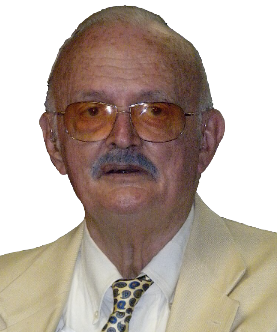
ロバート・ファリス・トンプソン
Robert Farris Thompson, 1932-2021

☆ロバート・ファリス・トンプソン(Robert Farris Thompson、1932年12月30日 - 2021年11月29日)は、アフリカとアフロ・アトランティック世界を専門とするアメリカの美術史家、作家である。1965年から50年以上後に引退す るまでイェール大学の教授を務め、美術史のジョン・トランブル大佐講座の教授を務めた[1]。トンプソンは1983年の著書『Flash of the Spirit』で「ブラック・アトランティック」という言葉を生み出した。彼はナイジェリア南西部のヨルバ地方に住み、ヨルバ芸術史の研究を行った。彼はイバダン大学に所属し、ヨルバの村落共同体に頻繁に出入りしていた。アメリ カ、メキシコ、アルゼンチン、ブラジル、キューバ、ハイチ、プエルトリコ、スリナム、カリブ海の島々で、ディアスポラのアフリカ芸術を研究した。
| Robert Farris Thompson
(December 30, 1932 – November 29, 2021) was an American art historian
and writer who specialized in Africa and the Afro-Atlantic world. He
was a member of the faculty at Yale University from 1965 to his
retirement more than fifty years later and served as the Colonel John
Trumbull Professor of the History of Art.[1] Thompson coined the term
"black Atlantic" in his 1983 book Flash of the Spirit: African and
Afro-American Art and Philosophy – the expanded subject of Paul
Gilroy's book The Black Atlantic.[2] He lived in the Yoruba region of southwest Nigeria while he conducted his research of Yoruba arts history. He was affiliated with the University of Ibadan and frequented Yoruba village communities. Thompson studied the African arts of the diaspora in the United States, Mexico, Argentina, Brazil, Cuba, Haiti, Puerto Rico, Surinam and several Caribbean islands. |
ロ
バート・ファリス・トンプソン(Robert Farris Thompson、1932年12月30日 -
2021年11月29日)は、アフリカとアフロ・アトランティック世界を専門とするアメリカの美術史家、作家である。1965年から50年以上後に引退す
るまでイェール大学の教授を務め、美術史のジョン・トランブル大佐講座の教授を務めた[1]。トンプソンは1983年の著書『Flash of the
Spirit』で「ブラック・アトランティック」という言葉を生み出した: これはポール・ギルロイの著書『The Black Atlantic』(邦題『ブラック・アトランティック』)の拡大版である[2]。 彼はナイジェリア南西部のヨルバ地方に住み、ヨルバ芸術史の研究を行った。彼はイバダン大学に所属し、ヨルバの村落共同体に頻繁に出入りしていた。アメリ カ、メキシコ、アルゼンチン、ブラジル、キューバ、ハイチ、プエルトリコ、スリナム、カリブ海の島々で、ディアスポラのアフリカ芸術を研究した。 |
| Career at Yale In 1955, Thompson received his B.A. from Yale University. After receiving his bachelor's degree and serving in the 7th Army in Stuttgart, he continued his studies at Yale, where he received his Master's degree in 1961 and his Ph.D. in 1965.[3] He was the first Yale professor and second person in the United States (the first being Roy Sieber at the University of Iowa in 1956) to receive a professorship in African Art history.[4] Having served as Master of Timothy Dwight College from 1978 until 2010, he was the longest serving master of a residential college at Yale. Thompson was one of America's most prominent scholars of African art,[5] and presided over exhibitions of African art at the National Gallery of Art in Washington D.C. He was one of the longest-serving alumni of Yale. |
エール大学でのキャリア 1955年、トンプソンはイェール大学で学士号を取得した。学士号取得後、シュトゥットガルトの第7軍に従軍した後、イェール大学で研究を続け、1961 年に修士号、1965年に博士号を取得した[3]。アフリカ美術史の教授職を得た最初のイェール大学教授であり、アメリカでは2人目(1人目は1956年 にアイオワ大学のロイ・シーバー)である[4]。 1978年から2010年までティモシー・ドワイト・カレッジの校長を務め、イェール大学の全寮制カレッジの校長としては最も長く在任した。トンプソンは アメリカで最も著名なアフリカ美術研究者の一人であり[5]、ワシントンD.C.の国民美術館でアフリカ美術展を主宰した。 |
| Publications and areas of study Beginning with an article on Afro-Cuban dance and music (published in 1958), Thompson dedicated his life to the study of art history of the Afro-Atlantic world.[3] His first book was Black Gods and Kings, which was a close reading of the art history of the Yoruba people of southwestern Nigeria (population of approximately 40 million).[3] Other published works include African Art in Motion, Flash of the Spirit (1983), Face of the Gods, and Tango: The Art History of Love.[3] Thompson also published an introduction to the diaries of Keith Haring. Some of his works have even been translated into German, Portuguese, French and Flemish.[3] Additionally, Thompson also studied the art of Guillermo Kuitca and José Bedia, and was anthologized 15 times.[3] |
著書と研究分野 1958年に出版されたアフロ・キューバのダンスと音楽に関する論文に始まり、トンプソンはアフロ・アトランティック世界の美術史研究に生涯を捧げた [3]。 彼の最初の著作は、ナイジェリア南西部(人口約4000万人)のヨルバ族の美術史を精読した『Black Gods and Kings』である[3]: トンプソンはまた、キース・ヘリングの日記を紹介する本も出版している。さらに、ギレルモ・クイトカとホセ・ベディアの芸術も研究し、15回もアンソロ ジーを発表している[3]。 |
| Awards The College Art Association presented its inaugural Distinguished Lifetime Achievement Award for Art Writing to Thompson in 2003,[6] and was named CAA's Distinguished Scholar in 2015.[7] In 2007, Thompson was given the "Outstanding Contribution to Dance Research" award, by the Congress on Research in Dance.[1] Personal life and death Thompson was born in El Paso, Texas.[8] He spoke French, Italian, Portuguese, and Spanish fluently and could speak Yoruba, Ki-Kongo[9] and German, Flemish, and Kreyol[which?][10] at an intermediate level. He has been to nearly all 47 countries of Africa and is survived by a sister, two children, four grandchildren and a great granddaughter.[9] Thompson died from COVID-19-complicated Parkinson's disease on November 29, 2021, at a nursing home in New Haven, Connecticut. He was 88.[11][12] |
受賞歴 カレッジ・アート・アソシエーションは、2003年にトンプソンにアート・ライティング部門の第1回特別生涯功労賞を授与し[6]、2015年にはCAA の特別奨学生に選出された[7]。 2007年、トンプソンはコングレス・オン・リサーチ・イン・ダンスから「ダンス研究への顕著な貢献」賞を授与された[1]。 私生活と死 フランス語、イタリア語、ポルトガル語、スペイン語を流暢に話し[8]、ヨルバ語、キ・コンゴ語[9]、ドイツ語、フラマン語、クレヨール語[どの] [10]を中級レベルで話すことができた。彼はアフリカのほぼ47カ国すべてに行ったことがあり、妹、2人の子供、4人の孫、ひ孫がいる[9]。 トンプソンは2021年11月29日、コネチカット州ニューヘイブンの老人ホームでCOVID-19合併パーキンソン病により死去した。88歳だった[11][12]。 |
| Bibliography 1971 Black Gods and Kings: Yoruba Art at UCLA 1974 African Art in Motion: Icon and Act in the Collection of Katharine Coryton White 1981 The Four Moments of the Sun: Kongo Art in Two Worlds 1983 Flash of the Spirit: African and Afro-American Art and Philosophy 1993 Face of the Gods: Art and Altars of Africa and the African Americas 1999 The Art of William Edmondon 2005 Tango: The Art History of Love 2011 Aesthetic of the Cool: Afro-Atlantic Art and Music |
書誌 1971年 黒い神々と王たち UCLAのヨルバ美術 1974年 動くアフリカ美術: キャサリン・コリントン・ホワイトのコレクションにおけるアイコンと行為 1981年 太陽の4つの瞬間: 二つの世界におけるコンゴ美術 1983 精神の閃光 アフリカとアフロ・アメリカンの芸術と哲学 1993年 神々の顔:アフリカとアフリカ系アメリカ人の芸術と祭壇 1999年 ウィリアム・エドモンドンの芸術 2005 タンゴ 愛の美術史 2011年 クールの美学 アフリカ系アメリカ人の芸術と音楽 |
| https://en.wikipedia.org/wiki/Robert_Farris_Thompson |
|
リ ンク
文 献
そ の他の情報
CC
Copyleft,
CC, Mitzub'ixi Quq Chi'j, 1996-2099